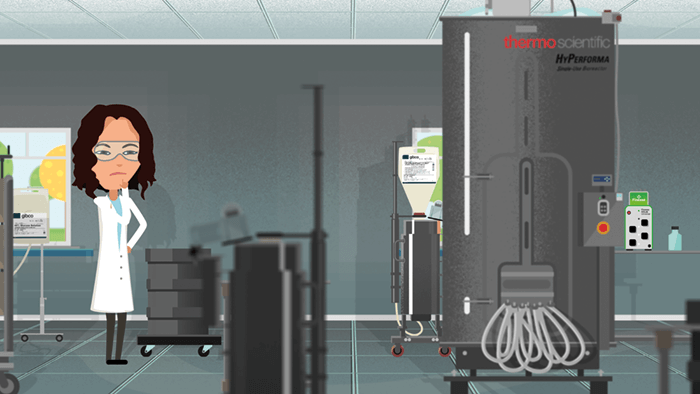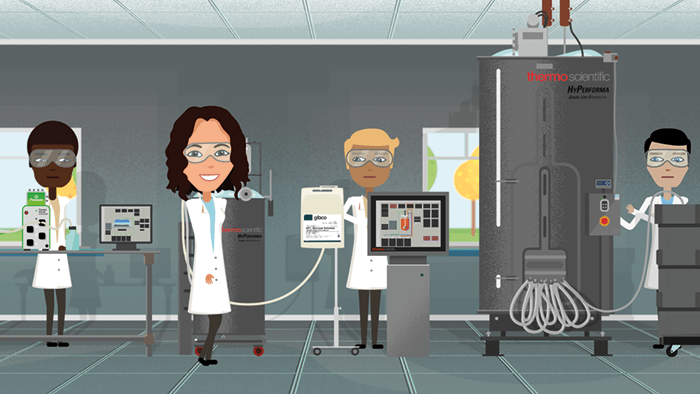Biologic medicines are changing the lives of more and more people around the world, but the increasing complexity of the molecules means that developing the right manufacturing process isn’t easy. I’ve spent over 15 years working in the industry on viral vaccines and therapeutic proteins, focusing on upstream process development, scale-up and cGMP manufacturing. I’ve developed processes for over a dozen different molecules and I often think about what makes a “good” or “optimized” process – and where the pitfalls lie. To me, an optimized process produces highly purified material in a minimal number of batches to meet your clinical timelines and prepare for commercial launch, all while managing cost, quality and supply. In addition, an optimized process must streamline operations, improve robustness and consistency, and minimize the opportunity for failures. You’ll also need to consider engineering controls to prevent contamination events or the introduction of adventitious agents. All of this should result in long-term manufacturing success. I know this is much easier said than done! With so many critical areas across the bioprocessing workflow, it can be difficult to know where to focus your efforts. I believe that success typically lies in taking a measured approach, balancing trade-offs associated with speed-to-clinic and process optimization – tailored to the specific needs for your molecule. There are a number of different areas that you can focus on to optimize your upstream process performance, but balance is important; it’s not always about getting the highest titer. Developing a process that reproducibly achieves a titer of 5 g/L, for example, may be more sensible than identifying the perfect set of conditions required to achieve 7 g/L. If the process needs to run “just right,” even a small deviation can lead to much lower titers than the initial 5 g/L, and potentially failure.
Overall, I believe there are three questions that you need to be asking throughout the optimization process:
- Can I simplify the process? Something that is easy to run at small-scale in the lab, may result in unnecessary risk and variability in a large-scale GMP environment. You may be able to reduce your risk of failure if you replace a complicated feeding strategy with a simplified approach. You may be able to reduce your risk of contamination if you replace open manipulations with closed systems. And you may be able to reduce your variability by streamlining cell expansion or media preparation.
- How do I ensure consistent performance? The closer you get to a commercial manufacturing process, the more batches you will need to run, and consistency and robustness become key – especially if you are aiming for commercial manufacturing of multiple batches per month, or perhaps dozens per year.
- How is upstream impacting downstream? You must consider the downstream implications of the upstream process – ensuring the material that is made can be consistently purified downstream.
A holistic approach
Process engineers have to balance speed without compromising on quality…connect upstream and downstream bioprocesses seamlessly…and design a system that is robust and scalable with materials they can count on. Trade-offs are everywhere when it comes to bioprocess development. For example, when thinking about speed-to-clinic, a “brute force” approach may often be best for the initial clinical process. When I used to work in vaccines, one big challenge was working on adherent cell cultures, where scale-up is much more difficult than with suspension cells. Early in the program, you might be thinking about whether you should develop a 2D (cell factory) or 3D (microcarrier) process. A 2D process may be simpler and quicker to develop, but requires more manual manipulations than a 3D process. Here again, there’s a trade-off between moving the program forward and facing operational difficulties during material production for a phase I trial. If speed-to-clinic is the focus, then process optimization (transitioning to a 3D process, for example) can be done during the clinical studies to prepare for late-stage or commercial manufacturing.
Whether we are talking about recombinant proteins or viral vaccines, and even if speed is the primary objective, product quality still remains absolutely crucial. It is not just a case of working out whether the quality attributes satisfy the requirements for clinical studies, but also whether they’re reproducible in the commercial process. In my view, process and product consistency is something you should be thinking about very early on.
When thinking about quality, there are two factors that you must keep in mind: raw material quality and product quality.An increasingly large body of evidence shows that the quality of the raw material – the presence or absence of impurities – not only impacts process performance but greatly impacts the quality of the drug substance. It is, therefore, imperative to understand the quality of raw materials that are being used during process development and how they compare to what will be available for use during clinical or commercial manufacturing.


Managing quality and supply
The need for quality raw materials also ties into another important consideration: assurance of supply. Stock outs are not something anyone – biopharmaceutical companies nor suppliers – want to deal with. During the development of a biological process, the reliability of the raw material supply chain must be considered. Supply continuity is vital; companies must have strategies for mitigating supply disruptions. There are many approaches to accomplishing this—from closely managing multiple suppliers to partnering with a trusted supplier that can consolidate your direct material supply. In all approaches, transparency in raw material supply requirements and the necessity for safety stocks, redundant site qualification or other means of preventing supply interruption is key. Managing raw material supplies can be daunting, and collaboration can help drive success. Instead of focusing only on the functional aspects of the upstream or downstream process, a holistic approach leads towards a successful outcome. The FDA is expecting more and more effort from drug companies when it comes to supply chain transparency – another great reason to collaborate with suppliers so that all parties gain a good understanding of where raw materials come from, how they’re used, and how the whole process is being managed. The importance of a good relationship with suppliers cannot be overstated as it affects everything from performance, to product quality and assurance of supply. You need to trust that your suppliers will deliver exactly what you are expecting so that you can troubleshoot effectively any process deviations that occur. Often it’s difficult to find the root cause of a problem, but having a close and trusted relationship with your supplier can help assess raw materials as the potential cause.Bioprocessing by design
Overall, there is no one-size-fits-all solution to bioprocessing. In addition to quality and supply chain requirements, you must understand the performance of your process in terms of titer, purity, biological activity and other important attributes. Knowing this enables a greater opportunity to balance development costs with the probability of molecule success. And if your product is a biosimilar, getting the product quality attributes to match the innovator is important. This may make it necessary to sacrifice some titer (upstream) or yield loss (downstream) to ensure the quality of the purified product, but remember that the market is competitive, which means heightened attention to speed and costs. Balancing process optimization with timeline constraints is often the biggest challenge a process development engineer will face. Upstream scientists will work to get the highest possible titers. Downstream scientists will work to get the most purified product. And the program lead will want the material in the clinic yesterday! My advice: understand what is absolutely critical for the program, prioritize those activities and utilize insights and technical engagement with trusted partners to design the right bioprocessing solution for your molecule. Serena Smith is Director of Strategic Customer Engagements at Thermo Fisher Scientific, and a bioprocessing leader with over 17 years of industry experience.Read the whole Bioprocess by Design series here:
Part 2. Keys to Consistent Bioprocessing - click here to read
Part 3. What Makes a “Process Intensification: Getting More From Less - click here to read






